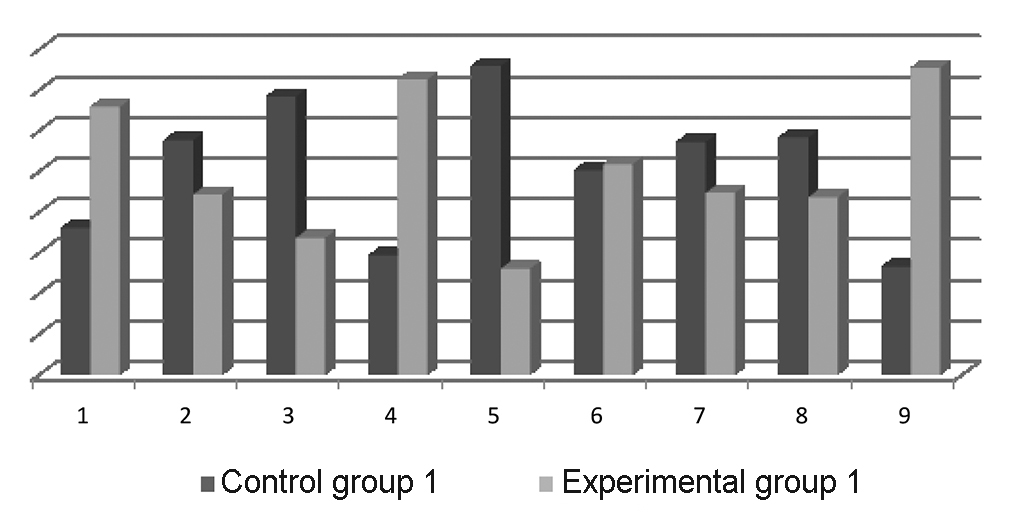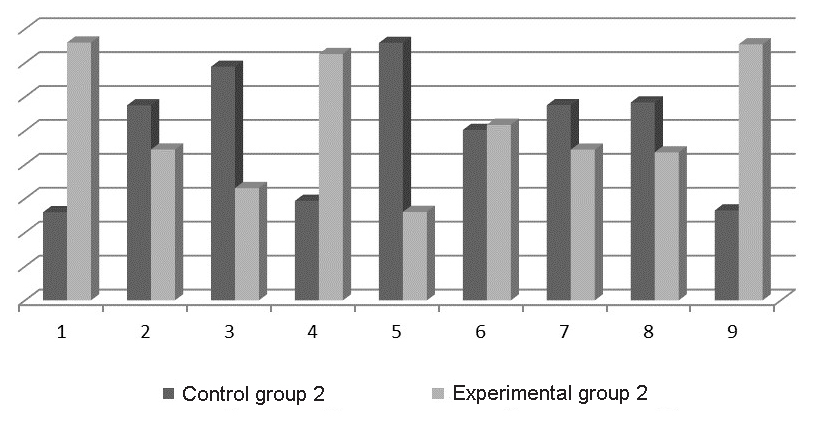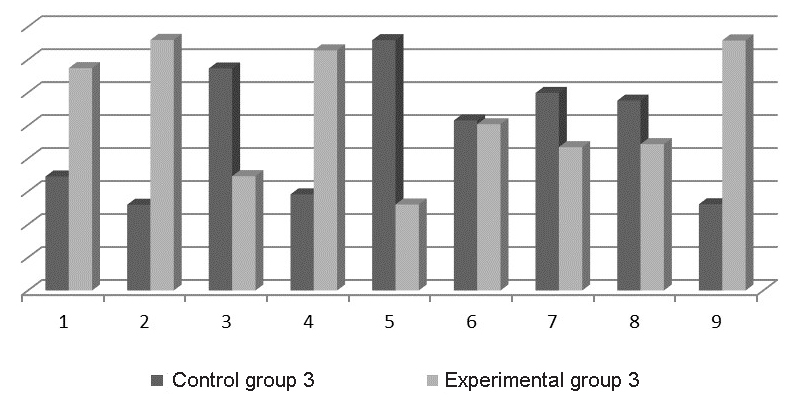Theoretical and practical provisions for individualized physical education service at military/ frontier service academies
ˑ:
Dr.Hab., Associate Professor A.S. Petrenko1
PhD, Associate Professor A.M. Fofanov2
Dr.Hab., Professor A.A. Greshnykh3
A.S. Grusevich2
1Moscow State University of Psychology and Education, Moscow
2Military Institute of Physical Culture, St. Petersburg
3Saint Petersburg University of State Fire Service of Emercom of Russia, St. Petersburg
Keywords: theoretical and practical provisions, physical trainings, individualized training, military academy, cadets.
Background. The study was considered relevant for the following reasons: first, the high performance standards set for the military personnel in the increasingly demanding situations of the combat missions; second, the high physical fitness standards set for the military personnel for success in the missions and operations; and third, the need to spell out the facilitating theoretical and practical provisions for the military physical training individualization initiatives.
Objective of the study was to provide theoretical and practical grounds for the individualized physical education service at military/ frontier service academies.
Methods and structure of the study. Having analyzed the available literature on the issues of military physical training individualization and findings of the relevant study reports, we would offer the following individualized military physical training service assessment criteria and test rates: see Table 1 hereunder.
Table 1. Individualized military physical training service criteria and test rates
|
|
Assessment criteria |
Individualized military physical training service test rates |
|
1 |
Physical training motivations |
Self-rates: questioning survey |
|
2 |
Physical development |
-Body length; -Body mass; -Body mass index: I = m/h×h; with m – mass, kg; h – length, m |
|
3 |
Functionality |
-Age; -Respiration system functionality: Serkin test; -Cardiovascular system stress response rate: Ruffier-Dickson index |
|
4 |
Physical fitness |
-Strength test rate: pull-ups test; -Speed test rate: 100m sprint test -Endurance test rate: 1km race test |
To find efficiency of the theoretical and practical provisions to facilitate the military physical training service individualization initiatives, we sampled three couples of Experimental (EG) and Control (CG) Groups of the Class II frontier servicemen. The first EG+CG couple was lagging behind in the prior endurance tests; the second EG+CG couple in the strength tests; and the third EG+CG couple in the speed tests. The EG trainings were individualized to improve the deficient physical qualities and spur up the physical training motivations. Every EG member was offered an individual training program with the physical progress tested and controlled in the process by the physical training instructor. The training workloads and intensities were planned and managed using the daybooks with indication of every session elements and progress goals. The EG servicemen lagging behind in the trainings or having some training backlogs were closely monitored, interviewed and motivated on an individual basis. The EG and CG progress was tested by the pre- versus post-experimental tests.
Results and discussion. The pre- versus post-experimental tests of the endurance-prioritizing EG+CG couple showed the EG progress in most of the tests being sigificantly better than in the CG: see Figure 1.

Figure 1. Pre- versus post-experimental test rates of the endurance-prioritizing EG+CG couple:
1 – strength; 2 – speed; 3 – endurance; 4 – Serkin respiratory system response test; 5 – CVS response, Ruffier-Dickson index; 6 – age; 7 – body mass; 8 – body mass index; 9 – motivation self-rate
The pre- versus post-experimental tests of the strength-prioritizing EG+CG couple showed the EG progress in every test being sigificantly better than in the CG: see Figure 2.

Figure 2. Pre- versus post-experimental test rates of the endurance-prioritizing EG+CG couple:
1 – strength; 2 – speed; 3 – endurance; 4 – Serkin respiratory system response test; 5 – CVS response, Ruffier-Dickson index; 6 – age; 7 – body mass; 8 – body mass index; 9 – motivation self-rate
The pre- versus post-experimental tests of the speed-prioritizing EG+CG couple showed the EG progress in every test being significantly better than in the CG: see Figure 3.

Figure 3. Pre- versus post-experimental test rates of the speed-prioritizing EG+CG couple:
1 – strength; 2 – speed; 3 – endurance; 4 – Serkin respiratory system response test; 5 – CVS response, Ruffier-Dickson index; 6 – age; 7 – body mass; 8 – body mass index; 9 – motivation self-rate
The study data and analyses showed benefits of the theoretical and practical provisions for the individualized military physical training service model as verified by the progress of the three EG being significantly better than in the CG in the physical fitness, physical development, functionality and motivational aspects.
Conclusion. To facilitate the military physical training service individualization initiatives with the relevant health and motivational emphases, the training establishments and decision-makers are recommended to:
- Have improved the legal and regulatory provisions for the physical training service to encourage its customizing and individualizing initiatives, with the relevant notional and definitional aspects;
- The physical training instructors need to be offered the advancement training courses to improve their professional competences in the theoretical and practical domains, with involvement of the relevant experts from the military and civil education agencies and establishments;
- Due provisions and resources need to offered to encourage the self-reliant physical training of the military personnel to improve their motivations for the trainings and physical progress agendas; and
- A set of practical recommendations need to be drafted to advance the military physical training individualization initiatives using the above criteria and progress tests under control of the highly competent and qualified physical training instructors.
References
- Averyasova Yu.O., Andryushchenko L.B., Aliev T.D. Formirovanie prostranstva fizicheskoy kultury v sisteme professionalnoy podgotovki studentov [Formation of physical education space in academic professional training system]. M.: TR-print publ., 2015. 170 p.
- Lubysheva L.I. Teoretiko-metodologicheskie i oCGanizatsionnye osnovy formirovaniya fizicheskoy kultury studentov [Theoretical, methodological and oCGanizational basics for formation of physical culture in students]. Doct. diss. abstr. [Hab.]. M.: SCOLIPE publ., 1992.
- Nastavlenie po fizicheskoy podgotovke v Vooruzhennykh Silakh Rossiyskoy Federatsii, prikaz ministra oborony Rossiyskoy Federatsii ot 21 aprelya 2009 g. # 200 (s izmeneniyami v 2013 godu) [Manual on physical training in the Armed Forces of the Russian Federation, Order of the RF Minister of Defense April 21, 2009 No. 200 (as amended in 2013).]. М., 2009. 200 p.
- Pashuta V.L., Fedorenko O.A. Model fizicheskoy podgotovki spetsialnykh podrazdeleniy dlya effektivnogo vypolneniya boevykh zadach [Physical trainingodel of special units for effective performance of combat missions]. Uchenye zapiski universiteta im. P.F. Lesgafta. 2012. no.2 (84). pp. 115-119.
- Pashuta V.L., Roldugin P.V. Faktory, opredelyayushchie effektivnost primeneniya kompleksnykh takticheskikh zanyatiy pri obuchenii kursantov voenno-fizkulturnogo vuza [Factors to determine effectiveness of complex tactical exercises in training of cadets at military-sports higher education institution]. Uchenye zapiski universiteta im. P.F. Lesgafta. 2014. no. 4 (110). pp. 115-119.
- Sushchenko V.P., Shchegolev V.A., Korshunov A.V. Osobennosti lichnostno-professionalnogo razvitiya razlichnykh kategoriy spetsialistov po fizicheskoy kulture i sportu [Specifics of personal professional development of physical education and sports specialists of different types]. Teoriya i praktika fiz. kultury, 2016, no. 6, pp. 3-5.
- Shchegolev V.A. Fizicheskaya podgotovka v voennykh obrazovatelnykh sistemakh SShA [Physical training in US military education systems]. Teoriya i praktika fiz. kultury. 2014. no. 9. pp. 55-60.
- Shchegolev V.A., Sivak A.N., Kochin A.A., Egorov V.Yu. Podgotovka spetsialistov voenno-fizkulturnogo profilya v vooruzhennykh silakh vedushchikh stran NATO [Military sport specialist training in Armed Forces of NATO lead nations (based on public foreign sources)]. Teoriya i praktika fiz. kultury. 2016. no.2. pp. 61-66.
-
Shchegolev V.A., Lipovka A.Yu., Korshunov A.V. Sluzhebno-prikladnaya napravlennost zanyatiy fizicheskoy kulturoy i sportom so studentami kak sposob formirovaniya ikh gotovnosti k vypolneniyu norm i trebovaniy GTO [Applied service physical education and sports classes to prepare students for GTO tests]. Teoriya i praktika fiz. kultury. 2016. no. 6. pp. 21-23.
Corresponding author: vifk-nic@ya.ru
Abstract
The modern military education system gives a special priority to the most efficient individualized physical education technologies to meet the FSES requirements and motivate cadets of the military/ frontier service academies for individualized physical trainings. Objective of the study was to provide theoretical and practical grounds for the individualized physical education service at military/ frontier service academies. Sampled for the study were cadets of the frontier academy split up into Experimental and Control Groups, with the Experimental Group trainings individualized with a special focus on the underdeveloped physical qualities and skills and motivations for the physical education practices. The new individualized physical education service model was found beneficial as verified by the Experimental Group versus Control Group progress in motivations for the physical education practices; physical progress test rates; plus notable growth of the teaching mastery of the future physical education specialists.


